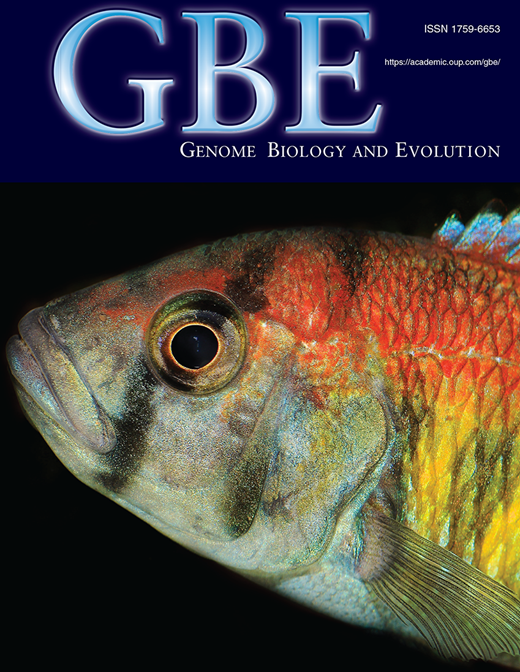Ver ítem
- xmlui.general.dspace_homeCentros e Institutos de InvestigaciónCICVyA. Centro de Investigación en Ciencias Veterinarias y AgronómicasInstituto de BiotecnologíaArtículos científicosxmlui.ArtifactBrowser.ItemViewer.trail
- Inicio
- Centros e Institutos de Investigación
- CICVyA. Centro de Investigación en Ciencias Veterinarias y Agronómicas
- Instituto de Biotecnología
- Artículos científicos
- Ver ítem
Patterns and processes of mycobacterium bovis evolution revealed by phylogenomic analyses
Resumen
Mycobacterium bovis is an important animal pathogen worldwide that parasitizes wild and domesticated vertebrate livestock as well as humans. A comparison of the five M. bovis complete genomes from the United Kingdom, South Korea, Brazil, and the United States revealed four novel large-scale structural variations of at least 2,000 bp. A comparative phylogenomic study including 2,483 core genes of 38 taxa from eight countries showed conflicting phylogenetic
[ver mas...]
Mycobacterium bovis is an important animal pathogen worldwide that parasitizes wild and domesticated vertebrate livestock as well as humans. A comparison of the five M. bovis complete genomes from the United Kingdom, South Korea, Brazil, and the United States revealed four novel large-scale structural variations of at least 2,000 bp. A comparative phylogenomic study including 2,483 core genes of 38 taxa from eight countries showed conflicting phylogenetic signal among sites. By minimizing this effect, we obtained a tree that better agrees with sampling locality. Results supported a relatively basal position of African strains (all isolated from Homo sapiens), confirming that Africa was an important region for early diversification and that humans were one of the earliest hosts. Selection analyses revealed that functional categories such as “Lipid transport and metabolism,” “Cell cycle control, cell division, chromosome partitioning” and “Cell motility” were significant for the evolution of the group, besides other categories previously described, showing importance of genes associated with virulence and cholesterol metabolism in the evolution of M. bovis. PE/PPE genes, many of which are known to be associated with virulence, were major targets for large-scale polymorphisms, homologous recombination, and positive selection, evincing for the first time a plethora of evolutionary forces possibly contributing to differential adaptability in M. bovis. By assuming different priors, US strains originated and started to diversify around 150–5,210 ya. By further analyzing the largest set of US genomes to date (76 in total), obtained from 14 host species, we detected that hosts were not clustered in clades (except for a few cases), with some faster-evolving strains being detected, suggesting fast and ongoing reinfections across host species, and therefore, the possibility of new bovine tuberculosis outbreaks.
[Cerrar]

Autor
Patané, José S.L.;
Martins Jr, Joaquim;
Castelão, Ana Beatriz C.;
Nishibe, Christiane;
Montera, Luciana;
Bigi, Fabiana;
Zumarraga, Martin Jose;
Cataldi, Angel Adrian;
Fonseca Junior, Antônio;
Roxo, Eliana;
Osório, Ana Luiza Alves Rosa;
Jorge, Klaudia dos Santos Goncalves;
Thacker, Tyler C.;
Almeida, Nalvo Franco;
Araujo, Flabio Ribeiro de;
Setubal, Joâo C.;
Fuente
Genome Biology and Evolution 9 (3) : 521-535 (March 2017)
Fecha
2017-03
Editorial
Oxford University Press
ISSN
1759-6653
Formato
pdf
Tipo de documento
artículo
Palabras Claves
Derechos de acceso
Abierto
 Excepto donde se diga explicitamente, este item se publica bajo la siguiente descripción: Creative Commons Attribution-NonCommercial-ShareAlike 2.5 Unported (CC BY-NC-SA 2.5)
Excepto donde se diga explicitamente, este item se publica bajo la siguiente descripción: Creative Commons Attribution-NonCommercial-ShareAlike 2.5 Unported (CC BY-NC-SA 2.5)


